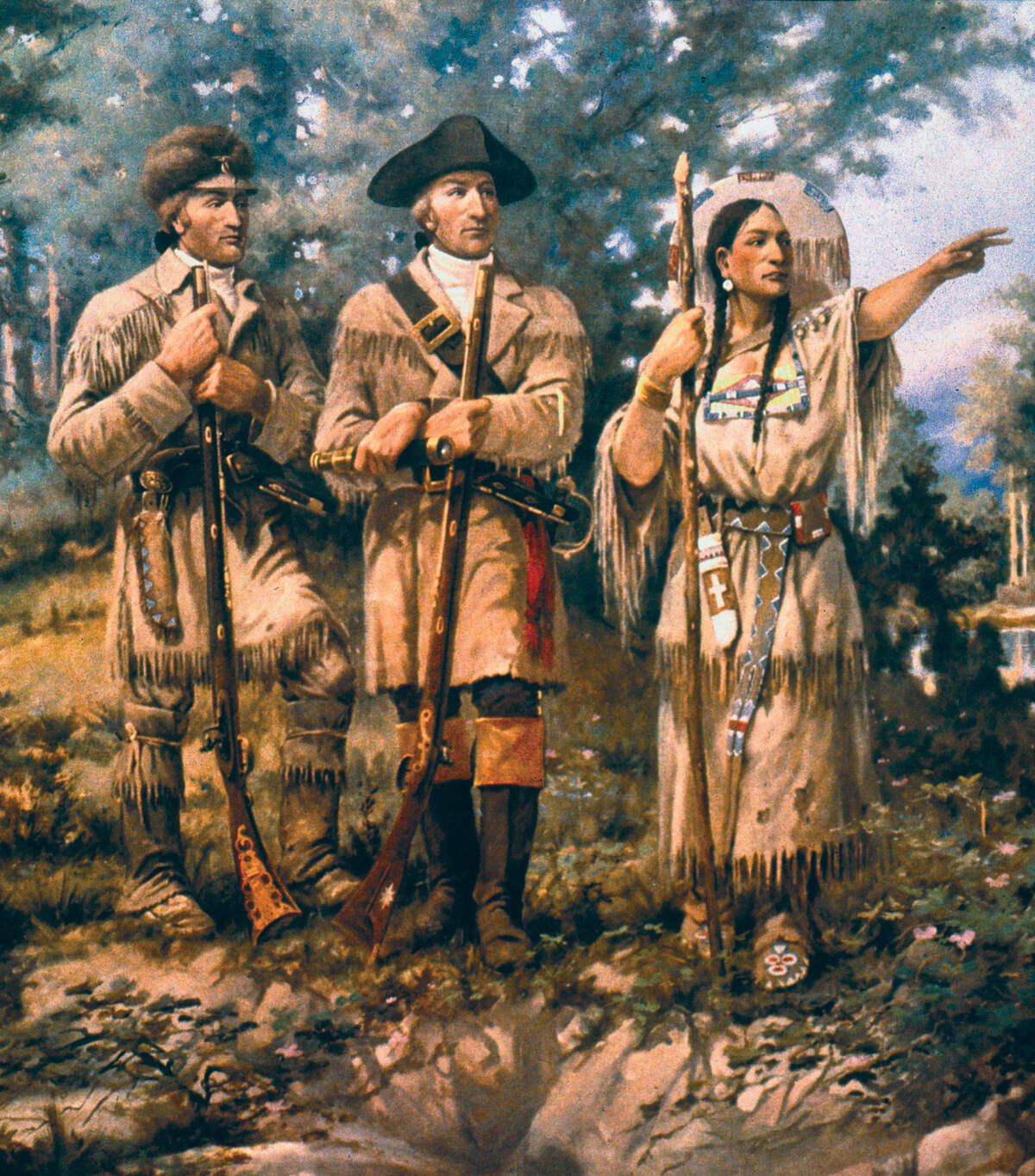

Sacagawea Day
Sacagawea (also spelled Sacajawea and Sakakawea) is believed to have died on today's date in 1812, and today we honor her contributions and courage. The daughter of a Shoshone chief, and part of the Lemhi band of the Shoshone tribe, she was born in May 1788 in the Lemhi Valley, near the Salmon River and the Rocky Mountains, in present-day Lemhi County, Idaho.
The Hidatsa tribe was enemies of the Shoshones, and they kidnapped Sacagawea in 1800 and brought to a Hidatsa-Mandan settlement in North Dakota. In 1803 or 1804, she became the property of fur trader Toussaint Charbonneau, who took her as one of his wives. Sacagawea's name means "bird woman" in the Hidatsa language—"sacaga" means bird and "wea" means woman. But, the Shoshone and some others claim that her name means "boat pusher" in the Shoshone language.
She soon joined the Corps of Discovery Expedition. Led by Meriwether Lewis and William Clark, the expedition came on the heels of the 1803 Louisiana Purchase, where Thomas Jefferson purchased a vast amount of land from France, almost doubling the size of the United States. The expedition was created to survey the land: maps would be made, flora and fauna would be documented, Native Americans would be learned about, and an effort would be made to find a Northwest Passage—a waterway connecting the two oceans. The expedition left St. Louis in May 1804 and came upon Sacagawea that November. They spent the winter nearby.
The explorers saw the value of Sacagawea and Charbonneau's language skills. Most Corps members spoke only English, but Francois Labiche spoke French, as did Charbonneau, who also spoke Hidatsa. Being that Sacagawea spoke Hidatsa and Shoshone, there could be a line of communication through all four languages. This was important in part because the Corps of Discovery wanted to buy horses from the Shoshone. Horses would be needed to transport belongings over the mountains.
Sacagawea and Charbonneau joined the expedition in April 1805, as did their son, Jean Baptiste, who had been born two months earlier. They journeyed with the Corps of Discovery on the northern plains, across the Rocky Mountains, to the Pacific Ocean, and back again. Sacagawea was just sixteen when they left and was the only woman on the expedition.
Sacagawea brought many assets to the expedition. She was knowledgeable about some of the terrain, especially when they got to Shoshone territory. For example, she helped the expedition cross through Bozeman Pass in Montana. She identified if plants were edible or medicinal or not. Being that she was a Native woman with a baby, she brought a calming presence whenever Natives and Americans came into contact with each other. At one point, a boat almost capsized and she gathered together and saved important documents, instruments, and other items. Her translating skills did come into use as well. Shortly after crossing the Continental Divide, at Lemhi Pass, she spoke with Shoshones in regards to procuring horses. It even turned out that the Shoshone chief was her brother.
After reaching the Pacific, the Corps of Discovery spent the winter and headed back east in the spring. They arrived back at the Hidatsa-Mandan settlement in August 1806. Charbonneau was paid in money and land, but Sacagawea received nothing for her services.
In the fall of 1809, Charbonneau, Sacagawea, and Jean Baptiste went to St. Louis, at the invitation of William Clark, who was Jean Baptiste's godfather. They were promised land to farm in exchange for allowing Clark to educate Jean Baptiste. The farming didn't work out and Charbonneau and Sacagawea left for a fur-trading expedition in April 1811, but Jean Baptiste stayed back with Clark.
In 1812, Sacagawea gave birth to a daughter, Lizette, but soon became sick with putrid fever. She died at Fort Manuel (also known as fort Lisa and Fort Mandan), in what is now Kenel, South Dakota, on December 20, 1812. She was twenty-four years old. Although some oral narratives say she lived much longer, Sacagawea Day is marked on December 20, giving honor to the young Shoshone woman who crossed the continent to aid the Corps of Discovery Expedition.
How to Observe Sacagawea Day
Here are some ideas on how to celebrate Sacagawea Day:
- Visit the Sacajawea Interpretive, Cultural, & Educational Center, located near Sacagawea's birthplace.
- Go to the Lewis & Clark National Historic Trail Headquarters and Visitor Center and make other stops along the Lewis & Clark National Historic Trail.
- View an interactive map of the Corps of Discovery Expedition.
- Stop at the Fort Clatsop National Memorial in Oregon.
- Visit a monument marking Sacagawea's death in Mobridge, South Dakota.
- Visit another monument or memorial to Sacagawea, such as those in Portland, Oregon or Kansas City, Missouri.
- Go to the Lewis & Clark Interpretive Center, nearby the location of Fort Mandan, where Sacagawea died.
- Explore Sacagawea Peaks in Montana and Idaho, and Sacagawea Peak in Oregon.
- Visit Sacajawea Park in Three Forks, Montana.
- Check to see if you have any Sacagawea dollars.
- Watch a documentary about Sacagawea or the Corps of Discovery.
- Read a book about Sacagawea or the Corps of Discovery. An early popular book is Eva Emery Dye's The Conquest: The True Story of Lewis and Clark, which presented a romanticized version of Sacagawea's life.





















